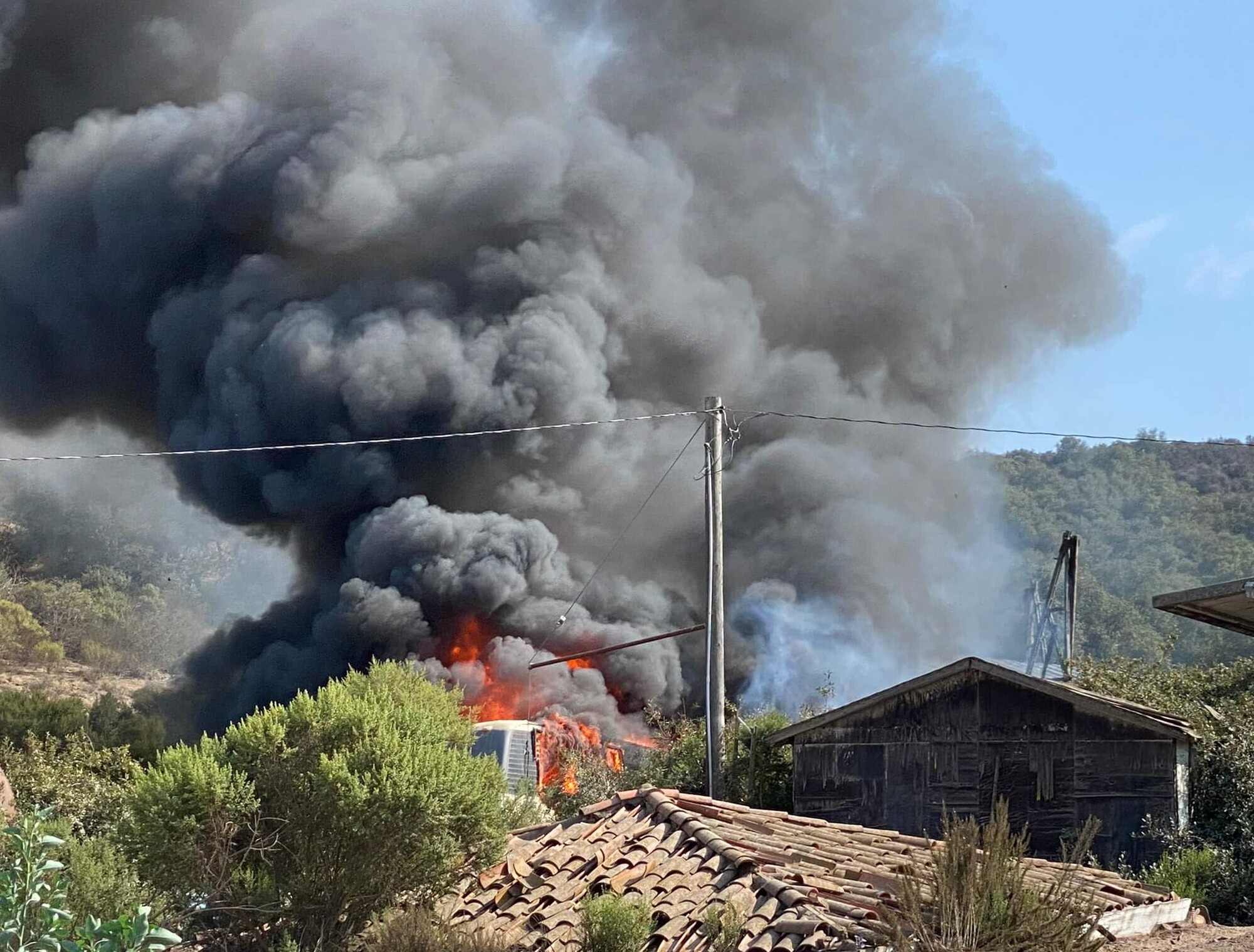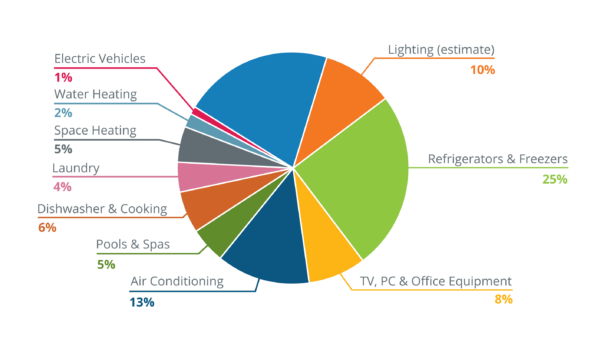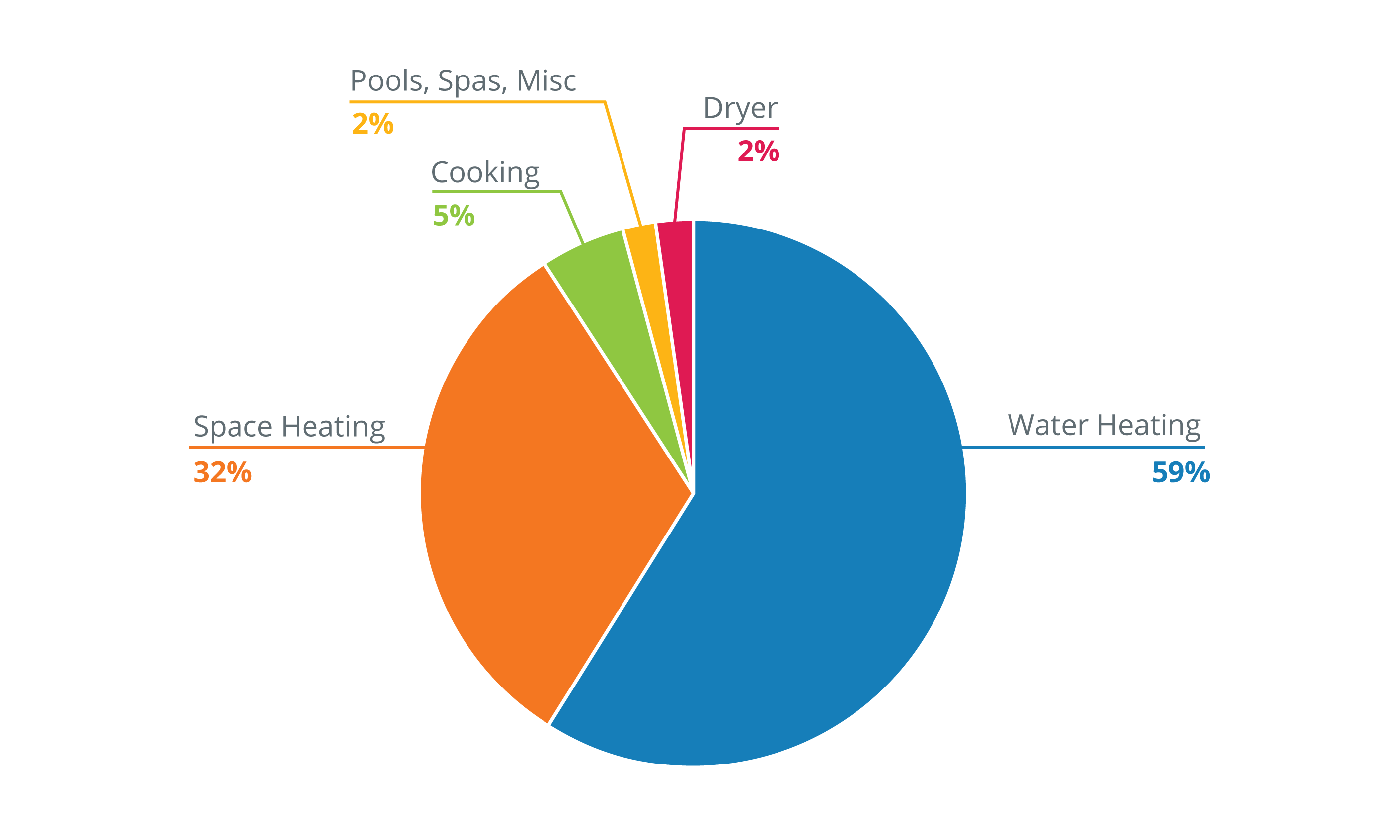Electricity System
Santa Barbara County residents, businesses, institutions, and government agencies are served by a patchwork of electricity providers. Central Coast Community Energy (3CE) is the default electricity provider for customers located in the unincorporated parts of the county and the cities of Buellton, Carpinteria, Goleta, Guadalupe, Santa Maria, and Solvang. 3CE is responsible for purchasing sufficient electricity to meet customer demand (quantity) and preferences (e.g., renewable content, local sourcing) in these communities. 3CE also offers customer programs, such as electrification incentives and education, and services like technical assistance for member agencies looking to electrify their fleet and adopt reach codes that help transition their communities to all-electric buildings and transportation.
The City of Santa Barbara has its own community choice energy agency, Santa Barbara Clean Energy, that provides electricity to its customers and has partnerships with third parties for customers to receive discounts and lease options for installing solar and/or battery systems.
The City of Lompoc Utility Department provides retail electricity service and owns and operates its electricity delivery system. The Lompoc Utility Department also offers rebates for energy-efficient equipment for homes and businesses.
Pacific Gas and Electric Company (PG&E) and Southern California Edison (SCE) operate the electricity delivery system outside of the City of Lompoc, regardless of the electricity supplier. PG&E (north county) and SCE (south county) deliver electricity over transmission lines—which carry large amounts of electricity over long distances—and distribution lines—which carry smaller amounts of electricity locally to homes and businesses. As shown on the Energy Assurance Map, the transmission lines in particular traverse mountainous, often fire-prone areas, making them more susceptible to outages. Building smaller distributed scale renewable energy resources and energy storage connected to the distribution grid can help reduce risks associated with delivering electricity over the transmission lines. PG&E and SCE also provide electricity to customers who opt out of receiving electricity from 3CE or Santa Barbara Clean Energy.
Natural Gas System

Southern California Gas Company (SoCalGas) provides most of the county’s natural gas supply and delivery services. Outside of SoCalGas’ distribution network, some residents and businesses rely on propane or natural gas trucked in by various suppliers and stored in onsite tanks.
Like the electrical grid, gas transmission lines move relatively large volumes of gas at high pressure over larger distances from natural gas processing and storage facilities to lower-pressure, smaller-volume distribution lines that connect directly to buildings. Compressors are used to increase pressure to keep gas flowing through the transmission and distribution pipeline system.
How Energy is Used
Just as energy used in Santa Barbara County comes from a variety of sources (power plants), energy also has a variety of uses. Most electricity (70%) and natural gas (55%) consumed in Santa Barbara County are used by non-residential customers (e.g., businesses, governments, schools, industrial facilities). (California Energy Commission, 2021a, California Energy Commission, 2021b)
However, we often are more familiar with how we use energy in our homes. A typical home in Santa Barbara County uses both electricity and natural gas. Electricity is commonly used for space and water heating, refrigeration, lighting, and powering appliances, electronics, and increasingly vehicles. Natural gas is commonly used for space and water heating, drying clothes, and cooking.
California Residential Electricity Consumption by End Use, 2019

California Residential Natural Gas Consumption by End Use, 2019

Source: California Energy Commission, 2019 California Residential Appliance Saturation Study
In 2009, a California household used, on average, 6,296 kilowatt-hours (kWh) of electricity and 354 therms of natural gas per year. In 2019, per-household usage shifted to an average of 6,174 kWh (1.9 percent decrease) and 360 therms (1.7 percent increase) annually. (DNV GL, 2022) The State of California, the County of Santa Barbara, and other local governments are encouraging a shift to all-electric homes that can help meet our state and local decarbonization goals. As we decarbonize our energy system, we expect the amount of electricity used per home to increase and the amount of natural gas used per home to decrease. The distribution of electricity and gas end uses will shift as we electrify items like vehicles, ovens and ranges, and space and water heaters that previously relied more on other fuels. Because of the expected shift towards electricity as the primary fuel, the County is focused on ways to bolster our electricity system.
Choosing Greener Electricity
As we electrify our buildings and vehicles, the types of electricity sources and how much pollution those sources create grow increasingly important. Most Santa Barbara County residents and businesses can choose how clean their electricity is by choosing their electricity provider and the type of electricity plan they subscribe to. The exception is customers of the City of Lompoc. All residents and most businesses in Lompoc must receive electricity from the City of Lompoc, which offers only one electricity plan.
